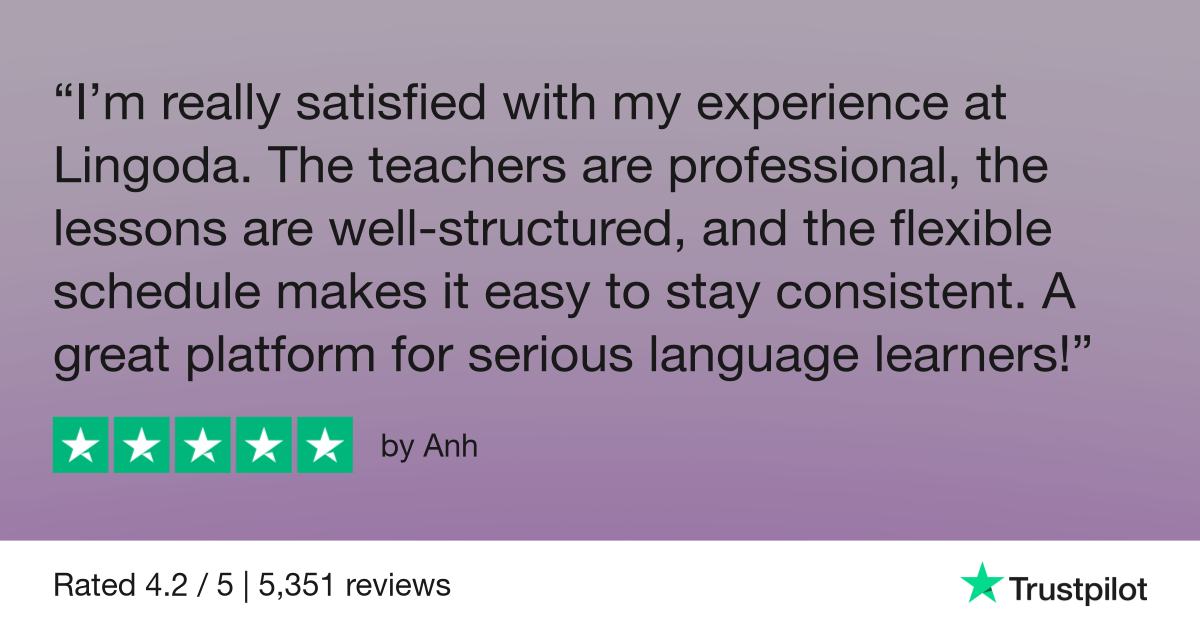Understanding the verb “to be” in the past tense

The verb “to be” is the most common and most irregular verb in English. If you’ve already learned how to use “am”, “is”, and “are” (see our guide to the English present tense), it’s time to tackle the past tense of “to be”: “was” and “were”. In this article, we’ll break down when and how to use “be” in the past, explain the rules clearly, and give you plenty of examples. You’ll also discover where you can expect to see the past tense of “be” and where these irregular past forms came from!
- What does “to be” mean in English?
- Forms of “to be” in the past tense
- How to use “to be” in past tense sentences
- Cultural and emotional nuance in usage
- FAQs
What does “to be” mean in English?
“To be” is what we call a linking verb in English. It can describe identity, qualities, location, emotions, and more. For example, “I am a teacher,” “She is happy,” or “They are at the park.” But it also acts as a helping verb, and appears in English tenses such as the past continuous and in the passive voice, like “They are working” or “The rooms are cleaned every day.” In the past tense, the forms “was” and “were” replace “am”, “is”, and “are”, depending on the subject.
- I am a teacher. → I was a teacher.
- They are working. → They were working.
Forms of “to be” in the past tense
WAS – When to use it
We use “was” after most singular subjects: I, he, she, and it. In standard English, we don’t use “was” after you. Here are some example sentences:
- I was in Paris yesterday.
- He was here a moment ago.
- She was a lovely person.
- It was a cold, rainy day.
WERE – When to use it
We use “were” after plural subjects: you, we, and they, as well as after the singular you.
- You were my first love!
- We were very excited to meet her.
- You were all welcome to come to the party.
- They were so helpful.
In second conditional sentences or after “wish” and “if only” when referring to an imaginary or unreal present or future, we use “were” with every subject.
- If I were you, I would see a doctor.
- I wish I were more confident when speaking English.
- If only it were a bit warmer.
However, you will also hear native speakers use “was” after singular subjects (but not after you) in these types of sentences.
- I wish he was/were here.
WAS vs. WERE – reference table
Here is a quick reference table showing the past forms of “be” with each subject.
| subject | past form |
| I | was |
| you | were |
| he | was |
| she | was |
| it | was |
| we | were |
| they | were |
How to use “to be” in past tense sentences
Affirmative sentences
In past simple affirmative sentences, the structure is as follows:
subject + was/were
- I was late for dinner.
- We were happy.
In past continuous affirmative sentences, the structure is like this:
subject + was/were + -ing verb
- You were speaking to Jack.
- She was eating soup.
And in the past tense of the passive voice, you will see this structure:
subject + was + past participle
- My bike was stolen yesterday.
- We were invited to the party.
Negative sentences
To form negative sentences, we add not after was or were. For example:
- I was not at school today.
- They were not waiting for us.
- The food was not served on time.
It is common to use contracted forms, especially in speech and informal writing. Here are the contractions:
was not → wasn’t
- I wasn’t at school today.
This is pronounced with two syllables: WOZ-unt.
were not → weren’t
- They weren’t waiting for us.
This is pronounced with one syllable: wernt.
Questions with “to be”
To form yes/no questions, we put was or were before the subject.
- Were you tired after your trip?
- Was she watching TV?
- Was the package delivered?
We do the same for WH-questions, but the question word is at the start of the sentence.
- Where were you?
- What were they doing?
- When was the bridge built?
Cultural and emotional nuance in usage
Can you spot any difference in meaning between these sentences?
- I was an idiot.
- I was being an idiot.
The first sentence is a general statement. The person is saying they were an idiot all or most of the time in the past. In the second, the person is saying they were temporarily behaving like an idiot. The statement is softened and made more specific. Let’s see another example.
- He was naughty when he was younger. (All or most of the time.)
- He was being naughty that day because he was very tired. (A temporary action on a specific occasion.)
Knowing these subtle differences makes your English much more advanced. If you’re wondering how to learn English grammar like a native speaker, check out Lingoda. In small-group classes, native-level teachers add context and guide you through the cultural nuances of language as well as the grammatical rules.

Learn English with Lingoda
How it works

Why English has no word like “beed”
We admit that “beed” would be the logical past form of “be”. But like many verbs in English, “be” is irregular (the most irregular of them all!) and is a hybrid of several earlier verbs. The two we can recognize in today’s past forms are beon and wesan. Both were infinitive forms of “be” in Old English. Here are the past forms of both:
| Subject | beon | wesan |
| I/he/she/it | wæs | wæs |
| you (singular) | wære | wære |
| you (plural)/we/they | wæron | wæron |
So, “be” was even more complicated in the past than it is now! Thankfully for modern learners, these forms evolved to become “was” and “were”. You can see similar origin stories in many other Germanic languages, including German (Ich bin → Ich war) and Dutch (Ik ben → Ik was).
What is the past tense of the verb to be?
The past tense of “to be” is “was” and “were”.
What is the past of to be in singular?
The past tense of “to be” in the singular form is usually “was”, but “were” is always used after “you”.
When to use the verb to be in the past?
We usually use the verb “to be” in the past simple, past continuous, and the past form of the passive voice.
Wrapping up: “was” and “were” made simple
Learning when to use the past tense of “to be” is a crucial step on your English-learning journey. The basics are simple: Use “was” for singular subjects (I, he, she, and it), and “were” for plural subjects (we, they, and always you). But remember that you’ll see “to be” in many situations, like conditional sentences, and to refer to an imaginary present. If you’re still unsure what the best way to learn English is for you, why not try one of Lingoda’s English courses? Native-level teachers will help you master English grammar and become confident talking about the past from day 1!

Learn English with Lingoda
How it works

















